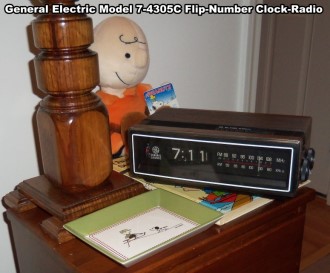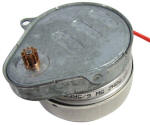AC Synchronous Motors in Alarm Clocks |
|
Why write about that here, you might ask? Well, a few days ago I received an e-mail from a chap in the UK who bought a similar clock radio on eBay. He told me of his experience and asked if I knew what was causing his clock to run slow. I knew it was not due to Special Relativity because he was traveling on Earth at about the same rate as me - a little slower due to being at a higher latitude - but insignificant for the reported error) ;-) Once I noted his .co.uk e-mail address, the answer was immediately obvious. My suggestion was to find a voltage and frequency converter made for international travelers. Most of those converters, I warned, convert only voltage but not frequency. What he needs is readily available, but costs much more, a dual voltage, dual frequency converter. It would be cheaper to find a synchronous motor designed to run on 50 Hz and retro fit it to the clock. Synchronous motors are uniquely qualified for use in clocks because of their slavish (electronically) dependency on the line frequency. The long-term stability of AC power, at least in the U.S. is exceptionally good. Power generation stations monitor the output line frequency (Brits refer to it as the 'mains') and make occasional adjustments to bring everything back into sync. Power companies use a highly accurate Universal Time (UT) reference for comparison for the automated system to make frequency changes. It is impossible to maintain a constant, highly accurate line frequency due to load changes, mechanical irregularities in the generation equipment, transmission routing changes, etc., so metered corrections are used to compensate over time. A simple formula governs rotational rate of an AC synchronous motor: Ns = 120 * (f/p) [rpm] where f = line frequency (Hz), and p = number of poles per phase. Accordingly, you could build a synchronous motor to drive the minute numeral changer without using any gears simply by using 120 * 60 / (1/60) = 432,000 poles ;-) In an August 1964 Electronics World article titled "Frequency & Time Standards," I commented on how much the crystal-driven digital clock in my high-end, 2014-era Asus notebook computer does a lousy job of keeping time and how it by default only updates its time with Internet time once every 7 days. It can easily be off by a couple minutes, which tends to annoy amateur horologists like me who have multiple chiming clocks that I keep in synch. Incidentally, I almost referred to myself as a chronophile, but had the good sense to look up the official definition first and discovered the tern chronophelia, which ain't good. Various sources offer a wide range of definitions, at least one of which is not complementary. Whew - that was a close one! BTW, Wikipedia has a cool set of audio samples of 50 Hz, 60 Hz, and 400 Hz 'noise' to listen to the difference.
Posted on June 11, 2015 |

